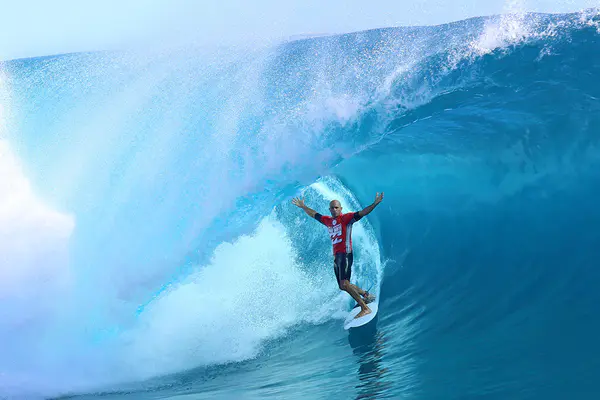Surfing is a beloved sport enjoyed by millions around the world. It involves riding waves on a board, showcasing skill and balance. But where did this thrilling activity begin? Understanding the origins of surfing can give us insight into its cultural significance and how it has evolved over time.
The Early Beginnings
Ancient Polynesian Culture
Surfing traces its roots back to ancient Polynesia. The Polynesian islands, scattered across the central and southern Pacific Ocean, were home to the first surfers. Evidence suggests that surfing was a significant part of Polynesian culture long before it became popular elsewhere.
Description of the Polynesian Islands
The Polynesian islands include Hawaii, Tahiti, New Zealand, and many others. These islands are characterized by their tropical climate, beautiful beaches, and, importantly, their waves. The geography and climate of these islands made them perfect for the development of surfing.
Early Evidence of Surfing in Polynesia
The earliest records of surfing come from Polynesia. Polynesians used wooden boards to ride waves, a practice that dates back at least a thousand years. This activity wasn’t just for fun; it was deeply embedded in their culture and daily life.
Cultural Significance of Surfing in Polynesia
In Polynesian society, surfing was more than a sport. It was a way to demonstrate strength, bravery, and skill. Chiefs and warriors often surfed to show their prowess. Surfing was also a way to connect with the ocean, which was central to Polynesian life and spirituality.
Hawaiian Influence
Introduction of Surfing to Hawaii
Hawaii, one of the Polynesian islands, played a crucial role in the history of surfing. When Polynesians migrated to Hawaii, they brought their surfing traditions with them. The islands’ consistent waves and warm waters provided ideal conditions for the sport to flourish.
Surfing in Hawaiian Culture and Mythology
Surfing in Hawaii was more than just a pastime. It was intertwined with the island’s culture and mythology. Hawaiian legends and chants tell stories of great surfers and their exploits. The Hawaiian term for surfing, “he’e nalu,” means “wave sliding,” which captures the essence of the sport.
Famous Early Hawaiian Surfers
Some of the earliest known surfers were Hawaiian chiefs and royalty. They surfed on boards made from local woods like koa and wiliwili. These early surfers set the stage for the development of modern surfing, demonstrating remarkable skill and daring.
Surfing in Polynesia
Polynesian Migration and Spread of Surfing
The Polynesians were expert navigators and explorers. As they migrated across the Pacific Ocean, they brought their culture and traditions with them, including surfing. This spread the practice to different islands, each adding their own unique touches to the sport.
Migration Patterns of Polynesians
Polynesian migration covered vast distances, from Hawaii in the north to New Zealand in the south, and as far east as Easter Island. This widespread movement helped to disseminate surfing across a large area, influencing various island cultures.
Spread of Surfing Across Different Islands
As Polynesians settled on new islands, surfing adapted to the local conditions. Each island developed its own surfing styles and techniques, using the materials and waves available to them. This diversity enriched the overall practice of surfing.
Evolution of Surfboards
Early Surfboard Designs
The first surfboards were made from heavy woods. In Polynesia, surfers used boards called “alaia,” “olo,” and “paipo,” each varying in size and shape. These boards were carved and shaped by hand, requiring great skill and craftsmanship.
Materials and Construction
Early surfboards were made from local trees. In Hawaii, koa wood was commonly used because of its strength and buoyancy. The boards were often long and heavy, requiring significant strength to maneuver.
Changes Over Time
Over the centuries, surfboard designs evolved. They became lighter and more maneuverable, making the sport more accessible to a broader range of people. Innovations in materials, such as the use of foam and fiberglass, revolutionized surfboard construction.
Surfing in the Modern Era
Introduction to the Western World
Surfing remained relatively unknown outside of Polynesia until the early 20th century. Western explorers and writers who visited the Hawaiian Islands were captivated by the sight of surfers riding waves. Their accounts helped to introduce surfing to a global audience.
Duke Kahanamoku and the Spread of Surfing
One of the most influential figures in the history of surfing is Duke Kahanamoku. An Olympic swimmer from Hawaii, Duke used his fame to promote surfing worldwide. He traveled extensively, giving demonstrations and teaching people how to surf.
See Also: What Is a Kook in Surfing Terms
Surfing’s Rise in Popularity
Thanks to pioneers like Duke, surfing began to gain popularity in places like California and Australia. Surf clubs and competitions started to emerge, further cementing surfing as a recognized sport. The 1960s saw a massive surfing boom, with the sport becoming a cultural phenomenon.
Conclusion
The origins of surfing can be traced back to the Polynesian islands, with Hawaii playing a central role in its development and popularization. From its ancient beginnings to its modern global presence, surfing has evolved and adapted, but its essence remains rooted in the respect and enjoyment of the ocean. As we continue to ride the waves, we honor the rich history and cultural significance of this timeless sport.

